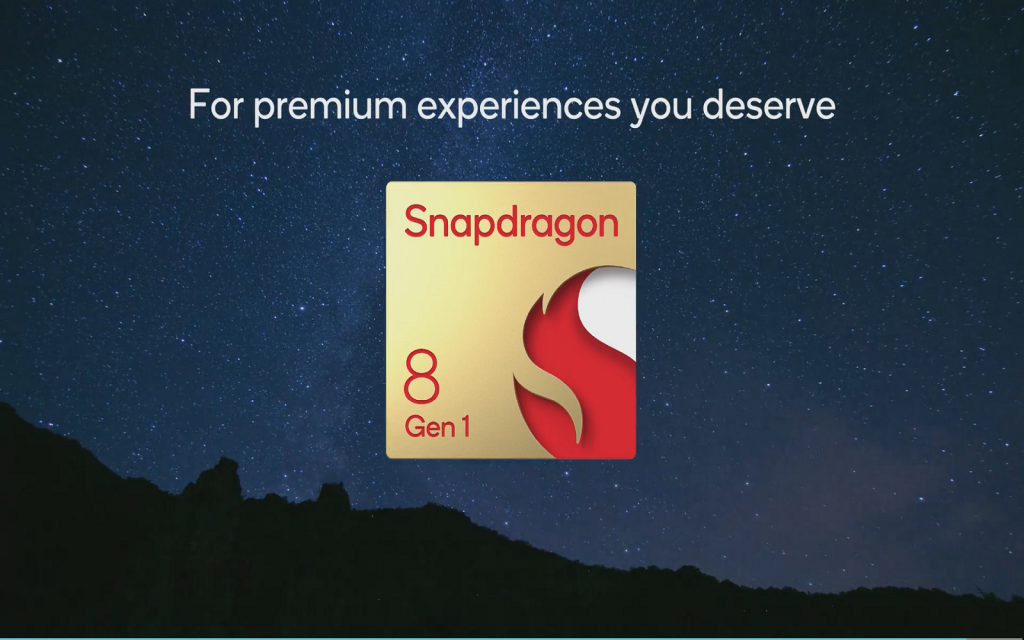Yesterday Qualcomm unveiled its shiny new flagship Snapdragon mobile platform, the Snapdragon 8 Gen1. There have been a few changes made over last year’s Snapdragon 888, not least of which is the new naming scheme that is bound to cause some confusion. But fear not, why we’re here. We’ll guide you through the changes as well as which Original Equipment Manufacturers (OEMs) are featuring the new platform.
Meet the Snapdragon 8 Gen1
Qualcomm is trying to simplify the naming scheme for its Snapdragon platform. So instead of calling the new platform the Snapdragon 898, we get Snapdragon 8 Gen1. The single digit denotes the class, followed by the generation. Let’s hope this sticks because we only just got used to the last naming convention.
This is the chipmaker’s first 4nm chipset. It’s gone down a whole nanometre from the 5nm Snapdragon 888 and 888+. Decreasing the size of the node usually means a performance and efficiency increase, as is the case here. Although it might be as much as expected.
Overall, this new platform provides a 20% speed increase over the Snapdragon 888 and it does so 30% more efficiently. In plain terms, it’s a little faster and your battery will last longer — at least on paper.
On the GPU side of things, the new Adreno module — which also saw a name change — provides a 30% performance increase and a 25% efficiency boost. The biggest improvement here is the Adreno Frame Motion Engine. This allows the GPU to render a game at double the framerate while using the same amount of power.
Or, if you value battery life over performance, you get the same framerate as before but at half the power cost. Unfortunately, there’s no ray tracing in this chip yet. That tech is only just coming out of its infancy so it’ll still be a year or two at least before we see it in mobile devices.
Other improvements Qualcomm bring to the table include better image and video processing, better machine learning capabilities, a better modem which is said to allow theoretical peak speeds of 10Gbps and increased security with the Trust Management Engine. This is similar to what Microsoft requires with Windows 11 and the TPM chip.
The OEMs jumping on board
With the official announcement of the new chipset, a lot of OEMs came forward with their new devices that are, of course, all the “first to feature” the new platform.
Xiaomi, Realme, Motorola, and Oppo have all come forward with their respective flagships that will feature the new chipset.
Of those, Xiaomi is the most likely to be first to market with their still-rumoured Xioami 12 series. The range is to be unveiled on 12 December, according to a recent leak. Xiaomi was first to market with the Snapdragon 888, can it get another notch
Hot on Xiaomi’s heels is Realme with its GT 2 Pro. It was seen in a recent leak having scored over 1 million points in Antutu’s benchmarks.
Next, Motorola’s next flagship the Edge X30 is confirmed to be the company’s first flagship with the new chipset. The launch event for this device will take place on 9 December, which is sooner than Xiaomi by a few days.
Finally, Oppo rounds out the OEMs with officially confirmed Snapdragon 8 Gen1 devices. The company didn’t say exactly which device will get the new chip but it is most likely the Find X4.
Those are just the official devices. Expect many more from the likes of Samsung, Asus, and OnePlus in the coming weeks. There’s no telling which of the new devices will ship here or when. As always, we’ll keep you posted.




